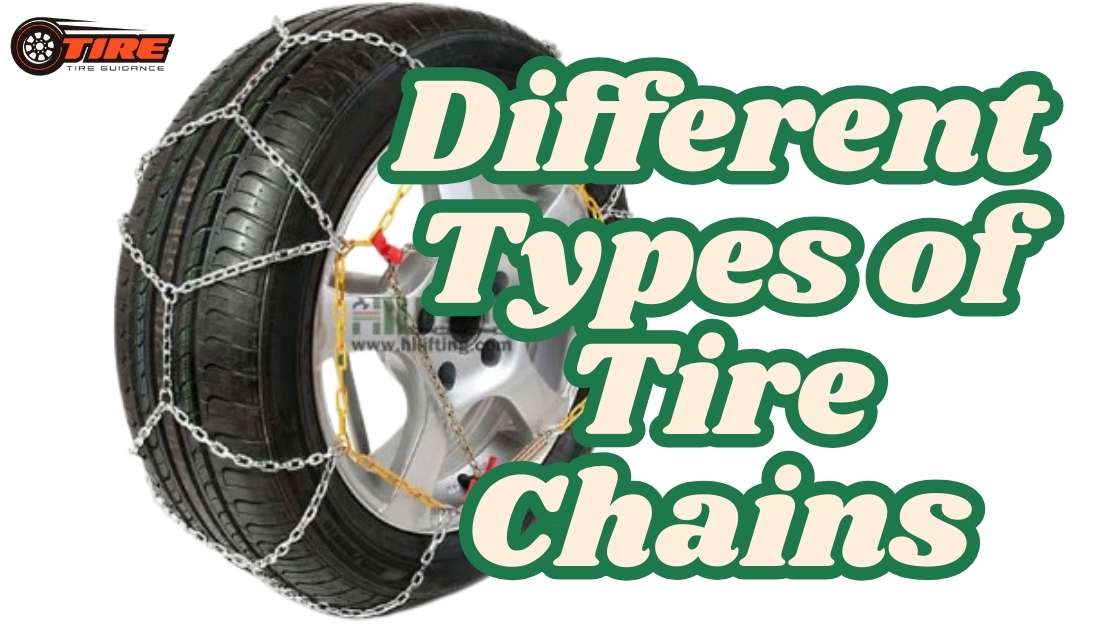As winter sets in, many drivers start to grapple with the challenges posed by snow and ice on the roads. One essential accessory that can enhance safety and improve traction during these harsh conditions is tire chains.
While snow tires are commonly discussed, tire chains offer a complementary solution that can make a significant difference when the weather descends into chaos.
The Importance of Tire Chains
Imagine a ski trip in the mountains where the route is lined with thick snow. On one such trip, a driver had to pull over to help a fellow traveler who had gotten stuck. The vehicle was equipped with tire chains, which allowed the driver to maneuver safely through the slippery terrain.
This experience made it clear how vital tire chains can be in certain conditions, providing enhanced grip and control.
Here are some advantages of incorporating tire chains in winter driving:
- Increased Traction: Tire chains grip the surface of the road more effectively than regular tires, particularly on icy or snowy paths.
- Enhanced Safety: They reduce the chances of slipping and getting stuck, ensuring that drivers can navigate through tough spots.
- Versatility: Tire chains can be put on and taken off based on the weather, allowing for flexible driving arrangements.
With these benefits in mind, understanding how tire chains function and the types available, as well as their installation and maintenance, becomes crucial. These elements will empower drivers to make informed decisions, ensuring not only their safety but also the safe travel of others on the road.
As we dive deeper, let’s explore the various benefits tire chains provide.
Table Of Contents
- 1 Benefits of Using Tire Chains
- 2 Types of Tire Chains
- 3 Choosing the Right Size Tire Chains
- 4 Installation of Tire Chains
- 5 Maintenance Tips for Tire Chains
- 6 Legal Regulations Regarding Tire Chains
- 7 Tire Chains vs. Snow Tires
- 8 Tips for Driving with Tire Chains
- 9 Removing Tire Chains Properly
- 10 Best Practices for Storing Tire Chains
- 11 FAQs
- 12 Conclusion
Benefits of Using Tire Chains
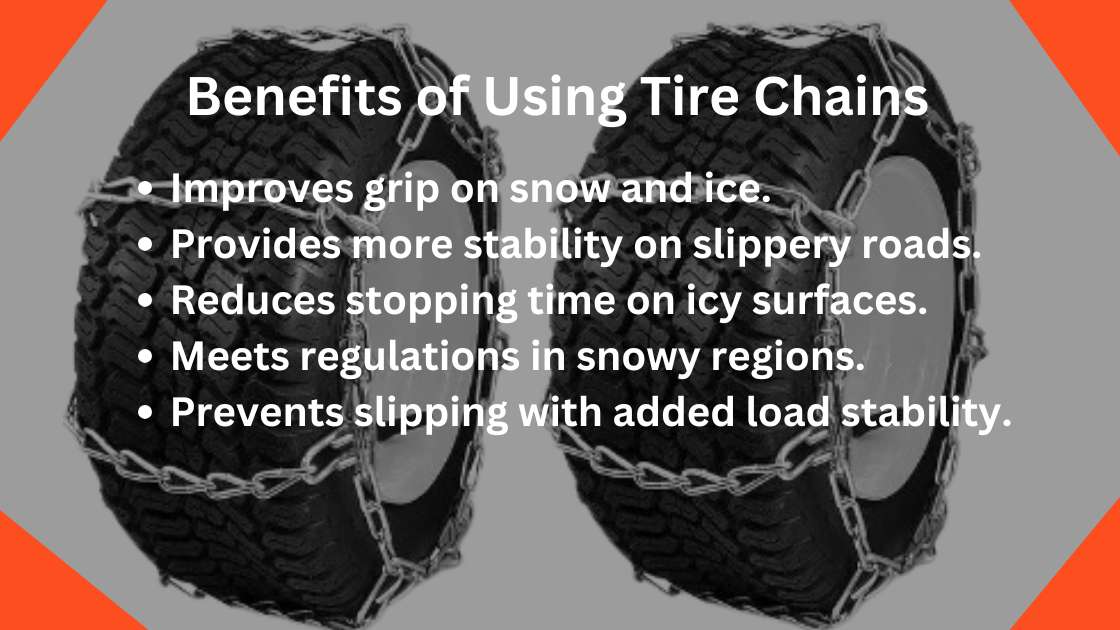
Now that we understand the importance of tire chains, let’s delve into the practical benefits they offer for winter driving. Whether navigating slippery roads or tackling steep inclines, tire chains can drastically improve a driver’s experience and safety.
Enhanced Traction and Control
One of the primary benefits of using tire chains is the superior traction they provide. During a particularly snowy winter, a friend of mine struggled to ascend a steep hill. She put on tire chains and was amazed at how her vehicle gained an almost “sticky” grip on the snowy surface, allowing her to maintain control and reach her destination safely.
Here are some specific advantages regarding traction:
- Reduced Slipping: Chains tread deeply into the snow and ice, minimizing the risk of slipping.
- Better Stability: Having tire chains improves vehicle stability, especially during sharp turns or sudden stops.
Improved Safety
With increased traction comes enhanced safety. Tire chains can be lifesavers in emergency situations, especially in areas prone to snowstorms.
Consider this:
- Emergency Readiness: Equipped with tire chains, drivers can confidently venture into adverse weather, knowing they are better prepared for unexpected challenges.
- Accident Prevention: By significantly reducing skidding and loss of control, tire chains help avert accidents, protecting both the driver and others on the road.
Cost-Effective Solution
Compared to investing in winter tires, tire chains can be a more economical option. Drivers can switch between chains and standard tires depending on the weather, saving money while still ensuring safety.
The diverse benefits of tire chains—from improved traction and safety to cost-effectiveness—make them a worthy consideration for any winter traveler.
Let’s now explore the different types of tire chains available on the market.
Types of Tire Chains
With a clear understanding of the benefits, tire chains offer, it’s essential to recognize that not all tire chains are created equal. Choosing the right type can make a significant difference in performance and ease of use. The two most common styles are ladder-style chains and diamond-style chains, each having its unique features and advantages.
Ladder Style Chains
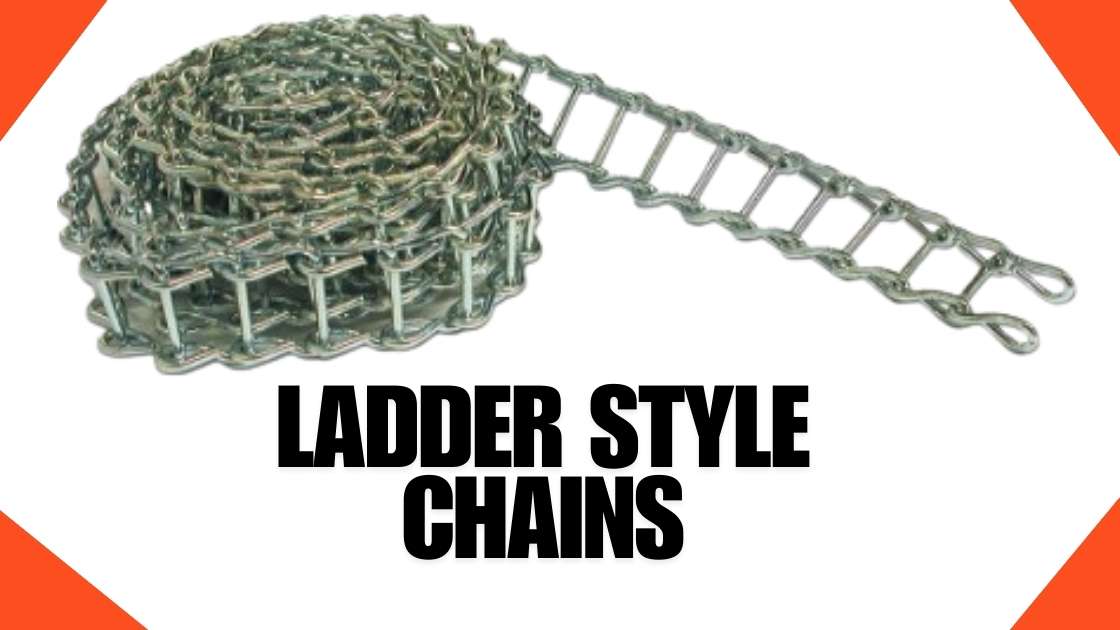
Ladder-style chains are perhaps the most traditional option. They consist of a series of horizontal cross-links shaped like a ladder—hence the name.
- Advantages:
- Simple Design: Their straightforward construction makes them relatively easy to install, which can be especially valuable during unexpected snowstorms.
- Cost-Effective: Generally, ladder-style chains are more affordable than other types, making them an accessible option for many drivers.
I recall a snow-covered weekend trip when a group of friends had to install ladder-style chains on their SUV. Despite the cold, their simplicity allowed for a quick setup, keeping the vacation spirit alive.
However, ladder chains may not offer the same level of traction in icy conditions as other styles.
Diamond Style Chains
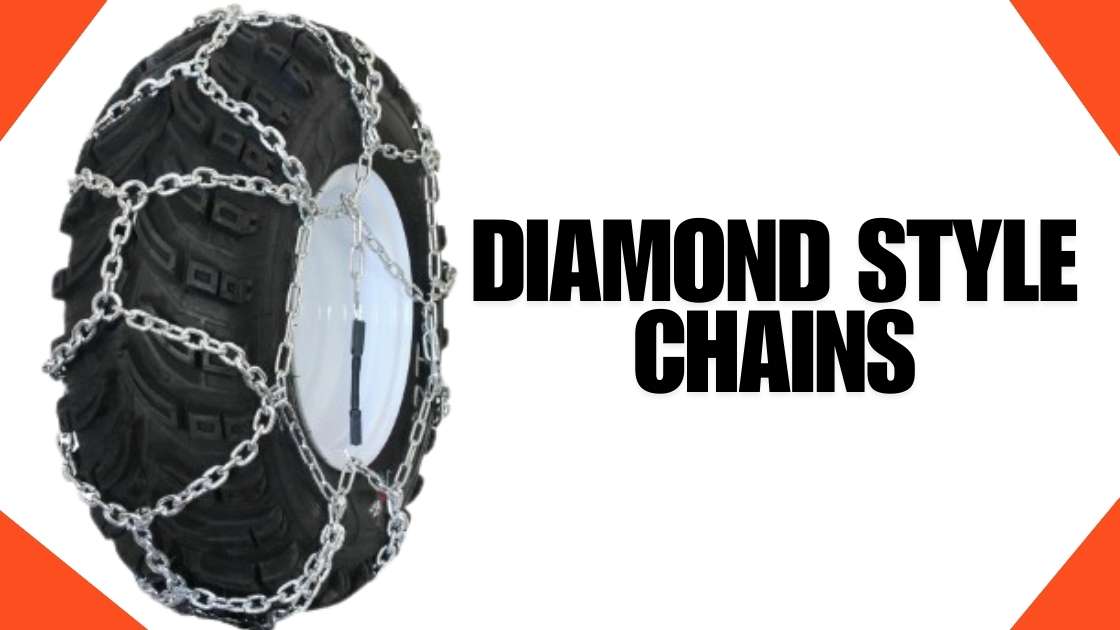
On the contrary, diamond-style chains are designed with a crisscross pattern that resembles a diamond shape. This style covers a larger surface area of the tire and is specifically engineered for enhanced grip.
- Advantages:
- Superior Traction: Their coverage allows for better contact with the road, making them suitable for severe conditions like deep snow or black ice.
- Reduced Vibration: The design minimizes rough handling while driving, providing a smoother ride compared to ladder chains.
While helping a neighbor during a snowstorm, they opted for diamond-style chains. The difference in traction was noticeable—her car glided through the snow with ease.
Ultimately, choosing between ladder-style and diamond-style chains depends on the driver’s needs and typical winter driving conditions.
Next, let’s discuss how to select the right size tire chains for your vehicle.
Choosing the Right Size Tire Chains
With a good understanding of the different types of tire chains, it’s now crucial to address how to choose the right size for your vehicle. Fitting tire chains correctly is essential for optimal performance and safety. An incorrectly sized chain can lead to poor traction, vehicle damage, or, in the worst case, accidents.
Understanding Tire Size Measurements
Before selecting tire chains, you need to know your tire size. This information is typically found on the tire sidewall, represented in a format like “P215/65R15.”
Here’s what each part means:
- P: Indicates it’s a passenger vehicle tire.
- 215: The width of the tire in millimeters.
- 65: The aspect ratio (the height of the tire sidewall as a percentage of the width).
- R: Denotes the tire’s radial construction.
- 15: The diameter of the wheel in inches.
Once you have your tire size, you can refer to the tire chain sizing charts provided by manufacturers.
Measuring for Fit
When choosing tire chains, it’s wise to consider these points:
- Consult Manufacturer Guidelines: Each type of chain will come with specific size recommendations, so following the manufacturer’s guidelines is important.
- Inquire at Local Auto Shops: If you’re uncertain, local automotive shops often have knowledgeable staff who can help you understand sizing specific to your vehicle.
- Consider Clearance: Ensure there’s enough space between your tires and any vehicle components. Chains require a bit more room to function without rubbing against the car.
I once borrowed tire chains from a friend, only to find they were too small for my vehicle. The experience highlighted the importance of confirming size before you need them on the road. In summary, correctly sizing tire chains increases not only your safety but also maximizes their performance.
Now, let’s move on to the installation process of tire chains to ensure you’re ready when the snow hits.
Installation of Tire Chains
Having chosen the right size tire chains, the next step is the all-important installation process. Proper installation is critical not only for safety but also for ensuring that your chains work effectively once on the road. Here’s a step-by-step guide to help you quickly and accurately fit tire chains.
Step-by-Step Installation Process
- Preparation:
- Find a Safe Location: Park your vehicle on a flat, dry surface away from traffic. This will make it easier and safer to install the chains.
- Wear Gloves: Tire chains can be rough and dirty, so wearing gloves is a good idea.
- Lay Out the Chains:
- Unpack the chains and lay them out flat on the ground, ensuring there are no kinks or twists. This makes it easier to connect the links.
- Position the Chains:
- Starting from the back of the tire, place the chains over the top of the tire and pull them down on both sides.
- Make sure the hooks and clasps are facing outward.
- Secure the Chains:
- While securing the chains, connect the inside part first, ensuring it sits snugly against the tire.
- Then, bring the outer portion around and connect it, adjusting as needed.
- Test the Fit:
- Drive forward slowly a few feet to help the chains settle into place.
- Stop and check if any adjustments are necessary to ensure they are tight but not overly so.
I remember the first time I put on tire chains during a heavy snowstorm. It took longer than I’d expected, but once I figured out the process, I felt a sense of accomplishment and relief knowing I was better prepared for the road ahead.
Final Thoughts
Always refer to the manufacturer’s instructions for any specific installation tips or precautions tailored to your tire chain model. Proper installation not only enhances safety but also extends the life of your tire chains.
Now that you are set for installation, let’s delve into some valuable maintenance tips to keep your tire chains in optimal condition.
Maintenance Tips for Tire Chains

Now that you’ve successfully installed your tire chains, it’s essential to focus on their maintenance to ensure they last for many winters to come. Like any other equipment, tire chains require a bit of care. Following a few simple maintenance tips can save you from potential headaches down the line.
Regular Visual Inspections
Make it a habit to inspect your tire chains before and after each use.
Look for:
- Wear and Tear: Examine the links for any signs of wear, cracks, or rust.
- Loose Links: Ensure all links are secured properly; loose links can lead to malfunctions while driving.
A friend of mine had a harrowing experience when a broken link caused their chain to come loose while driving in snow, leading to an unexpected detour to the nearest repair shop.
Cleaning and Drying
After each use, especially if you’ve been driving through slush and salt:
- Rinse Off Salt and Dirt: Use a hose to wash away any residue. This will help prevent rust and other damage.
- Dry Thoroughly: Make sure to dry the chains completely before storing them. Moisture left on the chains can lead to corrosion.
I usually keep a bucket and a rag in my garage dedicated to cleaning my tire chains. It only takes a few minutes and pays off in the long run.
Proper Storage
When winter ends and you’re ready to store the chains:
- Store in a Dry Place: Keep them in a ventilated area away from moisture to prevent rusting.
- Use a Container: A durable bin or bag can keep them organized and prevent them from tangling or getting damaged.
By taking these simple steps for maintenance, you can extend the life of your tire chains and ensure they’re ready for action whenever winter weather hits. Next, let’s explore the legal regulations surrounding tire chains and how they can vary by location.
Legal Regulations Regarding Tire Chains
As you enjoy the winter adventures that tire chains afford, it’s crucial to stay informed about the legal regulations governing their use. The laws regarding tire chains can vary widely depending on the state or country you’re in. Ensuring compliance not only keeps you safe but also helps you avoid costly fines.
Understanding Local Laws
It’s a good idea to check local regulations regarding tire chains before you hit the road.
Some key points to consider include:
- Chain Requirements: In some regions, chains are mandatory during winter months or in specific weather conditions. For example, California has imagery regulations for certain mountain passes where tire chains are required when conditions get severe.
- Timing of Use: Some areas permit chains only on certain days or during specific weather events. It’s essential to monitor weather forecasts and local advisories.
I remember a road trip to the mountains where we thought everything was fine until a highway patrol officer pulled us over. Thankfully, we had our chains ready, but it was a swift reminder to check state regulations before traveling.
Vehicle Restrictions
Certain vehicle types might have restrictions regarding the type or size of tire chains allowed. For instance, vehicles with low clearance, such as some sports cars or luxury sedans, might have restrictions on using specific styles of chains. Always consider:
- Manufacturer Guidelines: Your vehicle owner’s manual may outline any restrictions about tire chain usage and the recommended types.
By familiarizing yourself with local laws and vehicle restrictions, you can avoid unpleasant surprises.
Let’s now explore the advantages and differences between tire chains and snow tires, giving you a clearer picture of these winter driving options.
Tire Chains vs. Snow Tires
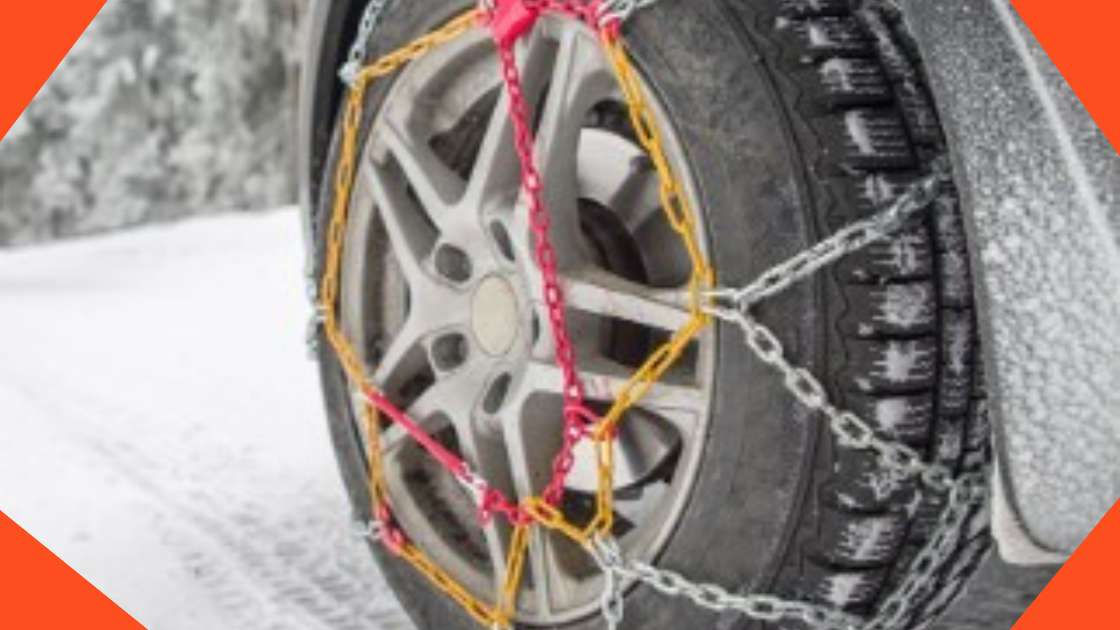
As you navigate winter driving challenges, you may find yourself weighing the pros and cons of tire chains versus snow tires. Both options offer unique benefits, and understanding their differences can help you make an informed decision based on your specific needs.
Understanding Snow Tires
Snow tires, also known as winter tires, are specially designed for cold weather conditions. They feature unique tread patterns and rubber compounds that optimize traction on snow and ice. Here are some of their key advantages:
- Year-Round Convenience: Once installed, snow tires can handle various winter conditions without needing to swap for chains.
- Improved Handling: Snow tires provide better stability and control in adverse weather, reducing the risk of accidents.
My experience with snow tires came during a cold, icy winter. While driving through a snowstorm, I noticed how they gripped the road better than regular tires, making the journey far less nerve-racking.
The Role of Tire Chains
Tire chains, on the other hand, are removable accessories that can be added to regular tires for added traction when conditions worsen. Their main benefits include:
- Enhanced Traction in Severe Conditions: Chains excel in deep snow or on icy surfaces, sometimes outperforming snow tires.
- Cost-Effective Option: If you only drive in heavy snow occasionally, tire chains can be a more economical choice than purchasing a new set of snow tires.
While preparing for a mountain trip one winter, my friends opted for chains because they expected heavy snowfall. They felt secure knowing that they could quickly install the chains when conditions worsened.
Which Should You Choose?
Ultimately, the choice between tire chains and snow tires hinges on your driving habits, geographic location, and the severity of winter weather you typically face. Many drivers find that a combination of both provides an excellent safety net. With this knowledge, you can better prepare for winter driving challenges and ensure a safe journey ahead.
Next, let’s explore some essential tips for driving effectively with tire chains installed.
Tips for Driving with Tire Chains
Now that you are equipped with tire chains and understand their benefits, it’s vital to know how to drive safely and effectively while they are installed. Driving with tire chains requires a different approach than normal driving, and adhering to specific guidelines can help you stay safe and maximize their effectiveness.
Adjust Your Driving Style
First and foremost, you’ll want to adjust your driving style when using tire chains.
Here are some essential tips:
- Slow Down: Tire chains can create additional noise and vibrations. Reducing your speed—generally not exceeding 30 mph—will help maintain control and ensure stability.
- Avoid Sudden Movements: Try to accelerate, brake, and turn gradually to prevent loss of traction or damage to the chains. Sudden changes can cause the chains to come loose or break.
I recall my first winter drive with chains; I was too eager and sped off in excitement. It didn’t take long before I had to stop and readjust because hitting the brakes too hard created a scary jolt!
Stay Alert for Road Conditions
Being aware of changing road conditions is crucial while driving with tire chains.
Keep these points in mind:
- Listen for Unusual Sounds: If you hear loud clangs or grinding noises, it may indicate that the chains are loose or improperly fitted.
- Know When to Remove Them: If you find yourself driving on clear, dry roads, it’s best to remove the chains, as their use on dry pavement can cause unnecessary wear and potential damage.
Practice Safe Stops
When stopping at traffic lights or signs, give yourself extra time to brake. The added friction from the chains can make stopping distances slightly longer, so be prepared. By following these tips, you’ll ensure a safer and more controlled driving experience while using tire chains.
Now, let’s discuss the proper way to remove tire chains once you’ve reached your destination or after a heavy snowfall.
Removing Tire Chains Properly
Once you’ve navigated through winter driving with tire chains, the next step is to remove them properly. Like installation, removing tire chains requires some care and attention to ensure you don’t damage them or your vehicle. Here’s how to do it safely.
Find a Safe Location
Start by pulling over to a flat, dry area away from traffic. This not only makes the process smoother but also prevents any accidents while you’re focused on detaching the chains. Remember, safety first!
- Check Traffic: If you’re on the side of the road, ensure it’s safe to stop before you proceed with removing the chains.
Release Tension Gradually
- Loosen the Chains:
- Begin by loosening the tension of the chains. Most chains have a release lever or knob. Make sure all connections are somewhat loose to avoid binding when you remove them.
- Carefully Remove the Chains:
- Starting from the back of the tire, pull the chains off one side and then the other. It’s often easier to remove them from the back of the tire first to prevent any awkward angles.
Back on a winter trip to the mountains, I experienced how tricky it could be. Stumbling around while trying to detach the chains made for a comedic sight, but it was essential to keep it steady to ensure nothing got damaged.
Storage Considerations
After removal, shake off any snow and ice from the chains and rinse them if necessary. Dry them thoroughly before putting them away to prevent rust.
- Use a Durable Bag: Storing them in a sturdy bag or container keeps them organized and prevents tangling.
Following these steps will help ensure your tire chains are ready for the next winter adventure.
With everything settled, let’s look at best practices for storing tire chains to extend their longevity and performance.
Best Practices for Storing Tire Chains
With your tire chains removed and cleaned, it’s time to focus on effective storage to ensure they remain in top condition for the next winter season. Proper storage can significantly extend the life of your tire chains, making them reliable when the snow hits.
Choose the Right Storage Location
First, select a proper storage environment. Here are some key considerations:
- Dry and Cool: Store your chains in a cool, dry space away from moisture, which can lead to rust and corrosion.
- Avoid Direct Sunlight: Prolonged exposure to sunlight can degrade the rubber components of the chains, so choose a shaded area if possible.
I learned this lesson the hard way when I stored my chains in an attic that got too hot in summer, leading to some wear and tear I didn’t notice until winter rolled around again!
Organize Your Chains
Keeping your chains organized will save you time when you need to use them again. Here’s how to do that effectively:
- Use a Container: Store your chains in a sturdy container or bag that can handle their weight. This prevents tangling and protects them from dust and dirt.
- Labeling: If you have multiple sets for different vehicles or sizes, label the containers so you can quickly find the right pair.
Regular Inspections During Off-Season**
Even while they’re in storage, perform occasional checks to ensure they haven’t developed any rust or damage. Simply pull them out and look over the chains and connectors. This can save you from unpleasant surprises when you need to use them.
By following these best practices for storing tire chains, you’ll ensure they stay in excellent condition and are ready for action when winter conditions arise again. With everything covered, you’re now fully equipped to enjoy a safe and secure winter driving experience!
FAQs
Can I use tire chains on all-season tires?
Yes, you can use tire chains on all-season tires if additional traction is needed in snowy or icy conditions. However, ensure that your vehicle’s owner’s manual allows for tire chain use, as some low-clearance vehicles might not be compatible.
How fast can I drive with tire chains?
It is generally recommended to drive no faster than 30 mph (48 km/h) with tire chains. Driving at higher speeds can cause damage to the chains, tires, and the road surface, and may also pose a safety risk.
Are tire chains universal for all vehicles?
No, tire chains are not universal. They come in different sizes and types to match various tire dimensions and vehicle types. It’s crucial to select chains that are compatible with your tire size and vehicle specifications for proper fitting and safe operation.
How do I know which type of tire chains to use for my vehicle?
The right type of tire chains depends on your vehicle type, typical driving conditions, and your preferences for ease of use. For example, cable tire chains are often suitable for lighter vehicles and occasional use, while link chains provide more durability and traction for heavy-duty vehicles like trucks.
Are there any legal restrictions on using tire chains?
Yes, some states or countries have regulations regarding the use of tire chains, especially to prevent damage to road surfaces. In certain regions, tire chains may be mandatory during severe winter conditions, while in others, their use might be restricted to specific areas. Always check your local regulations before using tire chains.
Can I use tire chains on a front-wheel-drive or rear-wheel-drive vehicle?
Yes, tire chains can be used on both front-wheel-drive and rear-wheel-drive vehicles, but they must be installed on the drive wheels. For front-wheel-drive cars, install them on the front tires, and for rear-wheel-drive vehicles, place them on the rear tires. For 4×4 or all-wheel-drive vehicles, it’s often recommended to use chains on all four tires for better stability.
How do I store my tire chains when not in use?
After use, clean the tire chains to remove any dirt or road salt, dry them thoroughly, and store them in a cool, dry place to prevent rusting. Keeping them in a storage bag or container will help protect them and make them easier to access when needed.
Conclusion
Choosing the right type of tire chains can make a significant difference in ensuring safe and reliable travel during winter conditions. Whether you’re navigating snowy mountain roads or dealing with icy city streets, tire chains provide the extra traction needed to keep your vehicle secure.
By understanding the different types—such as cable chains, link chains, diamond patterns, and self-tightening options—you can make an informed decision that matches your driving needs and vehicle type.
Proper installation and maintenance are also key to ensuring the longevity and effectiveness of your tire chains. Always refer to your vehicle’s manual, follow local regulations, and drive carefully when using tire chains.
By being well-prepared with the right chains, you can navigate winter roads with greater confidence and peace of mind.
As winter approaches, now is the perfect time to evaluate your options and invest in the best tire chains for your needs. Safe driving!

